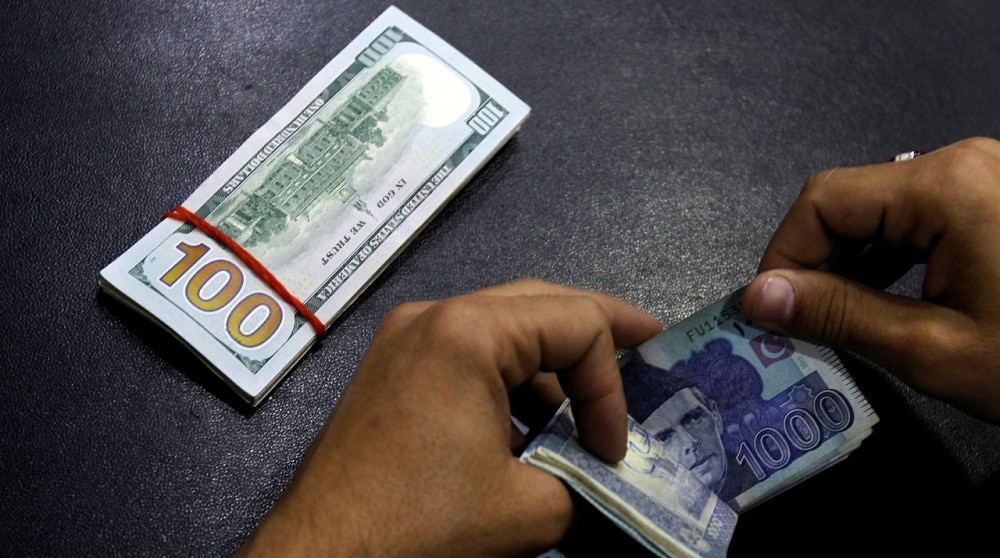The gap between interbank and open market rates has cautioned money changers about an imminent currency bedlam that could arise in the coming weeks as the support measures taken by the government to stabilize the Pakistani Rupee (PKR) prove inadequate.
The PKR is under pressure once again due to the US Dollar’s rampant surge in the international market, which has caused local exchange outlets to run out of the greenback and rattle markets once again.
Local factors such as dollar smuggling, informal currency trading, and the suspension of import regulations on essential goods like vegetables have also played a role in derailing PKR-USD parity.
On Thursday, the PKR closed at 225.42 against the USD in the interbank market. The open market was around 238-245, and the informal market was around 247. There was also low supply on the open market as money changers struggled to maintain the flow of dollars.
Rashid Iqbal of the Forex Association of Pakistan (FAP) told ProPakistani,
Demand issue is there, largely from imports which is making the gap. In 15-20 days, the gap will reduce but the price will seemingly stay above for now. When last time the gap went up [2-3 weeks ago] 100 LCs were opening daily. Now again, LCs are up but largely due to inflated food prices; banks become reluctant when their profits are dented. On the flip side, oil prices are going down again, which seems helpful, but now food items are piling a lot of pressure on the industry. The interbank rate is always leading.
Problems At Home
The big issue is a combination of second-class policymaking, a weak economy, the impact of floods, political instability, and a rampant dollar. The central bank has tightened import restrictions, but there is a significant payment backlog. Add to that the devastation caused by the floods.
Oil prices have fallen, which may relieve some of the pressure, however, in order for the PKR to return to its fundamental value, the politics between prominent parties need closure and fast.
When the open market was trading at a high premium to the interbank market in July, a single-day improvement in the interbank market shifted the PKR from a steep premium to a welcoming surcharge. The sentiments were effective. However, today, the open market is expecting a reversal in the interbank rates, while the interbank is blaming open market players for killing sentiments.
Seeing these issues from abroad, expats have seemingly slowed down remittances and prefer ‘informal’ channels to send money back home in exchange for high-yielding returns. Simultaneously, exporters have understandably resumed hoarding the greenback for a huge payday when the dollar peak drops.
Another issue is the UAE’s decision to make it mandatory for Pakistani passengers to declare AED 5,000 on arrival at Emirati airports, which has resulted in a dirham shortage and, to that effect, the scarcity of US Dollars in the market.
Rampant Dollar Picking Up Scalps Everywhere
Many expected the International Monetary Fund’s (IMF) $1.1 billion disbursal to stabilize the rupee, but the currency has stagnated since then. Instead of just local factors delivering a big blow this time, the US Dollar has been a key determinant of ascertaining exchange rates across the globe on its own.
Economic analyst A. H. H. Soomro told ProPakistani,
PKR is under pressure due to global trends of USD strengthening. It’s a global phenomenon that doesn’t pertain to Pakistan’s situation only. US Federal Reserve is signaling a hawkish tone and first, the dollar has to peak before the PKR shows signs of stability. Overall, our fall is parallel to USD strengthening. SBP can’t fight with the global wave.
By manipulating interest rates, central banks exert influence over both inflation and exchange rates, and changing interest rates impact inflation and currency values. Higher interest rates offer lenders a higher return relative to other countries, and the United States Federal Reserve is playing the exact same game all the way.
On Wednesday, the dollar reached a 24-year high against the Yen and new highs against the Australian and New Zealand currencies after US economic data reinforced the view that the Federal Reserve will continue aggressive policy tightening.
As European Union lawmakers prepare to meet this week to discuss the energy crisis that is hammering industry and squeezing households, the Euro remained close to its two-decade low against the dollar, well below parity.
The dollar is expected to march higher beyond December 5, 2022, when the EU plans to implement a price cap on Russian crude to prevent Moscow from making enough cash to fund its invasion of Ukraine.
International media suggests Asia’s struggling currencies won’t regain their losses against the US dollar anytime soon as the prevalent economic and related issues continue to fuel an expected recession and increased government spending for most economies across the continent.
Will the PKR make it? Let us know in the comment section below.

























